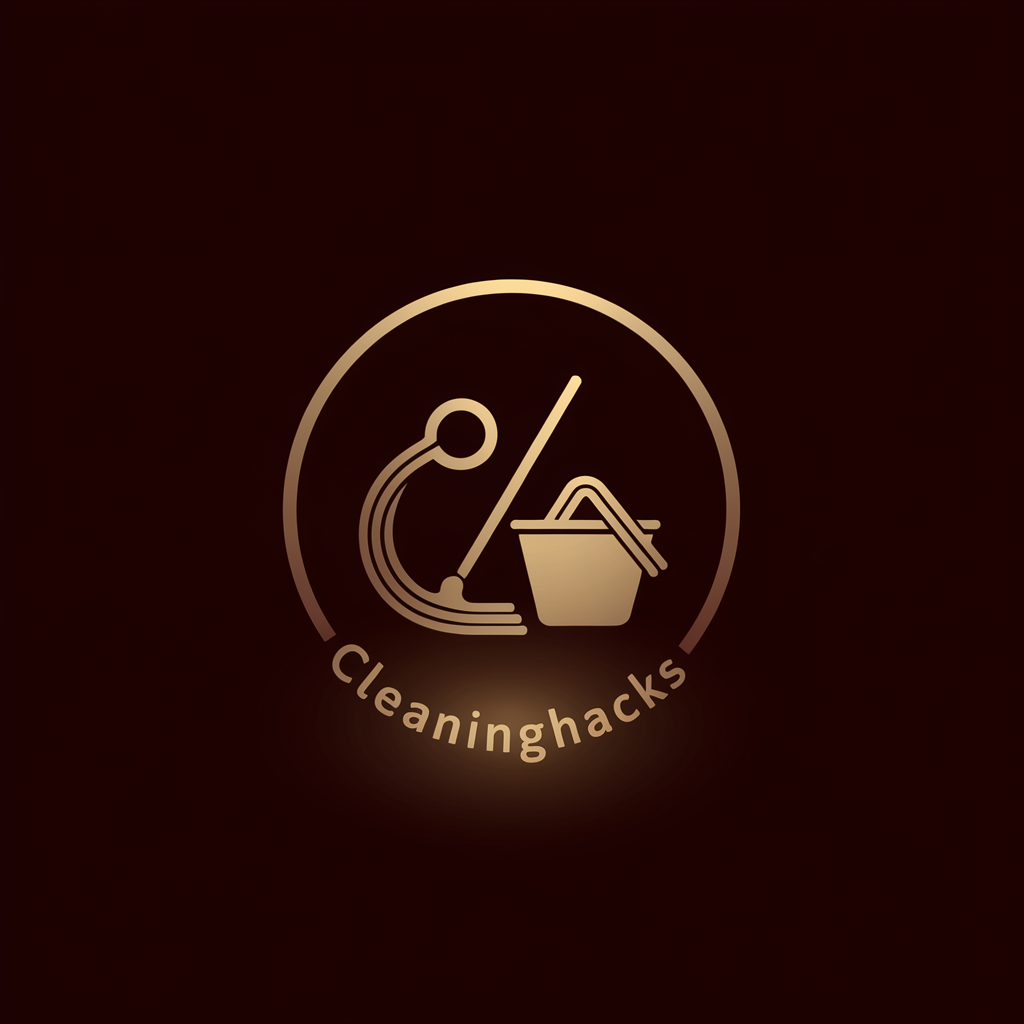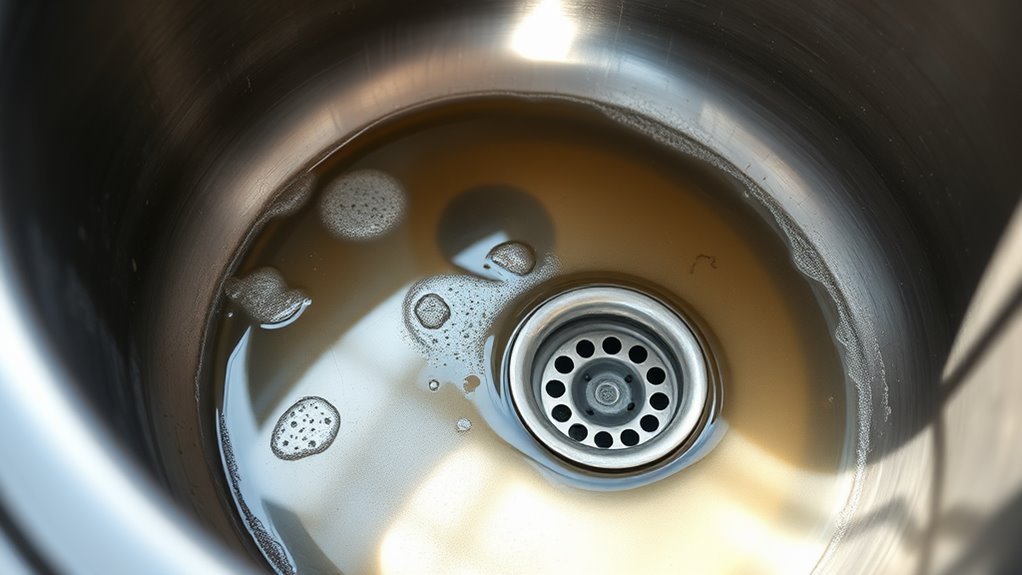Sink Not Draining. Try This Foolproof Cleaning Tip
If your sink’s not draining, don’t worry—there’s a simple, effective fix you can try. Grease, hair, and debris often clog pipes, slowing water flow. You’ve likely got the tools for this natural cleaning method right in your kitchen. It’s straightforward, safe for most pipes, and avoids harsh chemicals. Curious about how to restore that smooth drain flow? Stick with me to uncover this practical solution.
Key Takeaways
- Start by using a plunger over the drain with hot water to dislodge minor clogs.
- Push and pull the plunger firmly 10 times to loosen debris.
- Mix vinegar and baking soda as a cleaning solution for stubborn residue.
- Pour the solution down the drain and let it sit before rinsing.
- Run hot water weekly to prevent future buildup and maintain flow.
Understanding Sink Blockages
Why do sinks get blocked so often? You’re likely dealing with a buildup of grease, food particles, or hair that accumulates over time in your drain.
These materials stick to pipe walls, narrowing the passage and causing slow drainage or a complete blockage.
As a practical clogged sink fix, start by identifying the type of debris causing the issue.
Grease often solidifies, while hair tangles with soap scum.
Regularly flush your sink with hot water to prevent buildup.
If a blockage occurs, address it promptly to avoid bigger issues.
Keep your sink flowing with consistent maintenance.
Discover simple methods to unclog your sink with easy, effective techniques.
Gathering Essential Tools
Before you start cleaning your sink, make sure you’ve got the basic tools like a plunger, drain snake, and a bucket to handle debris and water.
Don’t overlook the importance of safety gear—grab rubber gloves to protect your hands from grime and chemicals, and consider safety goggles if you’re using harsh cleaners.
Having these items ready ensures you’re prepared for a thorough and safe cleaning process.
A simple drain unclogging tool can also be a game-changer for tackling hair clogs efficiently.
Basic Tools Needed
To effectively clean your sink, you’ll need a few essential tools to ensure the job is done right.
Grab a plunger to dislodge minor clogs with suction.
Keep a drain snake handy for deeper blockages; its flexible design reaches stubborn debris.
You’ll also want a small bucket to catch any water or gunk during the process.
Have an old toothbrush or scrub brush for cleaning around the drain opening.
Finally, stock some baking soda and vinegar for a natural cleaning solution.
With these tools ready, you’re set to tackle that clogged sink efficiently and restore proper drainage.
Safety Gear Importance
How can you ensure your safety while cleaning a sink?
Before starting, gear up with essential safety equipment to protect yourself from harsh chemicals and debris.
Wear rubber gloves to shield your hands from cleaners and dirty water.
Use safety goggles to prevent splashes from irritating your eyes.
If you’re using strong drain cleaners, don a face mask to avoid inhaling fumes.
Keep a well-ventilated workspace to minimize chemical exposure.
Don’t skip these precautions—they’re critical for preventing injuries.
With the right safety gear, you’ll tackle the clog confidently and protect yourself from potential hazards during the process.
Preparing the Work Area
Ever wondered about the best way to set up for cleaning your sink?
Let’s get your workspace ready with precision.
Before you start, ensure you’ve got everything organized to avoid interruptions.
Clear the sink of dishes and debris, and gather your tools nearby for easy access.
Here’s how to prepare effectively:
- Lay down old towels around the sink to catch drips and protect surfaces.
- Open a window or turn on ventilation to keep the area fresh.
- Keep a bucket handy for collecting any water or residue.
With these steps, you’re set for a smooth, efficient process.
Using simple ingredients for a homemade drain cleaner can be an eco-friendly solution.
Applying the Cleaning Method
Now that your workspace is prepped, let’s get to the heart of cleaning your sink with a focused method. Grab a plunger, fill the sink with hot water, and position the plunger over the drain. Push down firmly, then pull up sharply—repeat this 10 times to loosen debris. For an even simpler solution, try using a common household item to unclog your drain effectively.
Feel the frustration lift as you tackle this clog. Check the emotional journey below:
| Step | Emotion |
|---|---|
| Starting | Frustration |
| Plunging | Determination |
| Seeing debris loosen | Hope |
| Clearing drain | Relief |
| Finishing | Satisfaction |
Keep at it; you’re almost there with a clean sink!
Testing the Drainage Flow
After cleaning your sink, turn on the faucet to check water movement and ensure it flows smoothly down the drain.
Watch closely for any slow drainage or pooling, as these are clear signs of potential blockages that need attention.
If you notice any issues, you’ll need to investigate further to pinpoint and resolve the problem.
For a natural solution, try using baking soda to effectively unclog stubborn drains.
Check Water Movement
Take a moment to test your sink’s drainage flow by turning on the faucet and observing how quickly the water disappears down the drain.
If it’s slow, there’s likely an issue with the flow.
You’ll need to assess this carefully to pinpoint the problem.
Run both hot and cold water to compare speeds.
Here’s what to watch for:
- Flow Rate: Does water pool before draining?
- Consistency: Is the drain speed steady or fluctuating?
- Sound: Do you hear gurgling noises during drainage?
Note these observations. They’ll guide your next steps in resolving the drainage issue efficiently.
Identify Blockage Signs
Look closely at the observations you’ve made while testing your sink’s drainage flow to spot potential blockage signs.
Notice if water pools at the bottom or drains slower than usual.
Check for gurgling sounds, which often indicate air trapped by a partial clog.
Inspect for foul odors emanating from the drain, signaling debris buildup.
If you’ve turned on the faucet and the water backs up, that’s a clear sign of obstruction.
Document these symptoms precisely—they’ll guide your next steps.
Address these issues early, and you’ll prevent worsening clogs or potential pipe damage down the line.
Preventing Future Clogs
Several key practices can help you prevent future clogs in your sink.
By adopting simple habits, you’ll keep water flowing smoothly and avoid frustrating blockages.
Stay proactive with these targeted strategies to protect your drain.
Here’s how you can safeguard your sink:
- Use a Drain Strainer: Install a mesh strainer to catch food particles, hair, and debris before they enter the drain.
- Avoid Grease Disposal: Don’t pour grease or oil down the sink; it solidifies and traps other waste.
- Run Hot Water Regularly: Flush the drain with hot water weekly to dissolve minor buildup.
Additionally, consider a routine DIY drain cleaning schedule to maintain clear pipes and prevent buildup.
Additional Maintenance Tips
Beyond preventing clogs, you can maintain your sink’s performance with a few targeted practices. Regularly inspect the drain for debris buildup and clean it monthly using vinegar and baking soda to break down residue. Check pipe connections for leaks and tighten them if needed. For a powerful alternative, try a natural drain cleaner recipe that uses eco-friendly ingredients for effective results.
Use this maintenance schedule for optimal results:
| Task | Frequency | Tools Needed |
|---|---|---|
| Inspect Drain | Weekly | Flashlight |
| Clean with Solution | Monthly | Vinegar, Baking Soda |
| Check Pipe Connections | Bi-Monthly | Wrench |
Don’t ignore unusual odors; they often signal hidden buildup. Address issues promptly to ensure efficient drainage.

